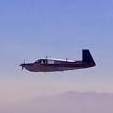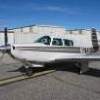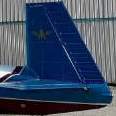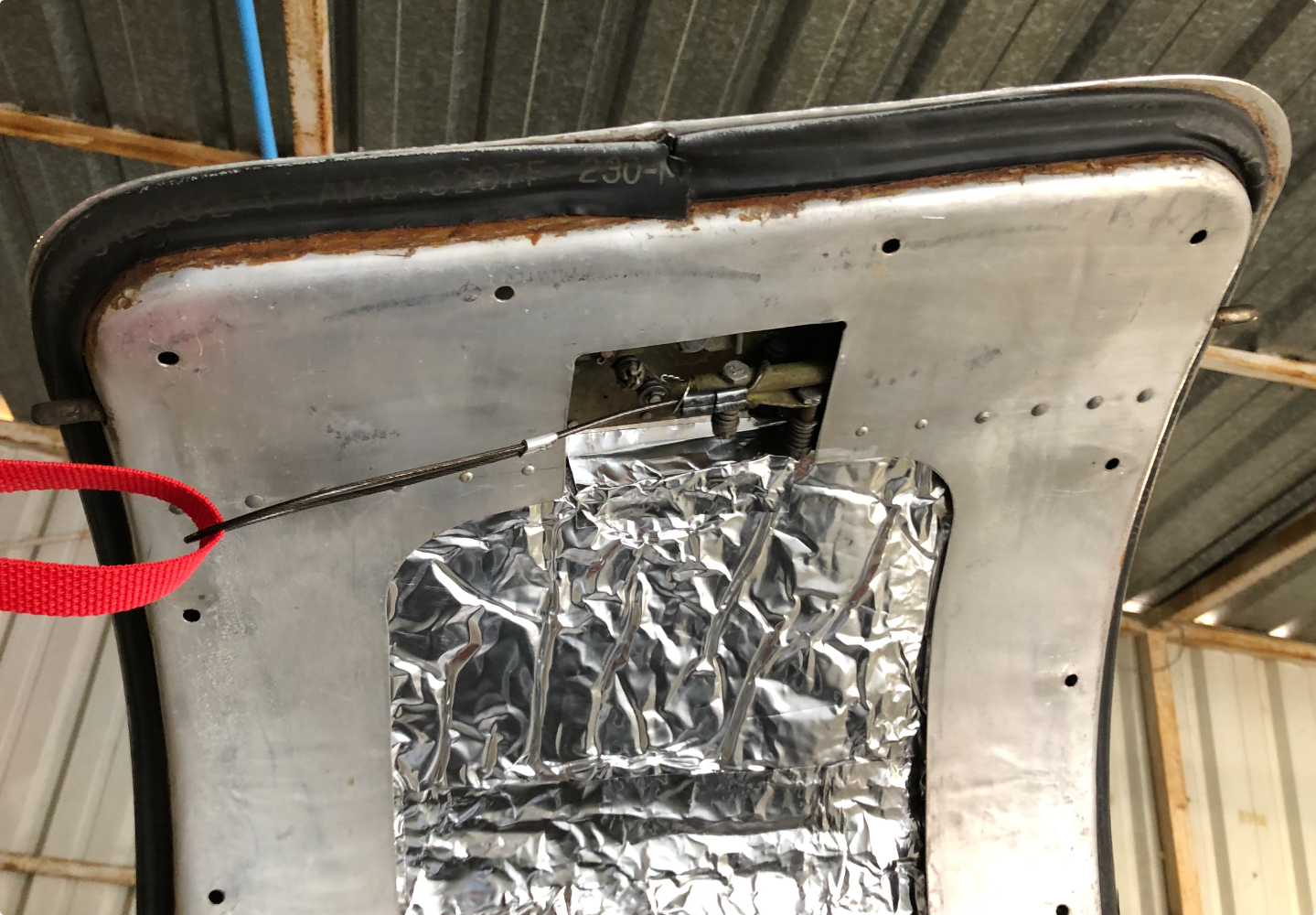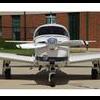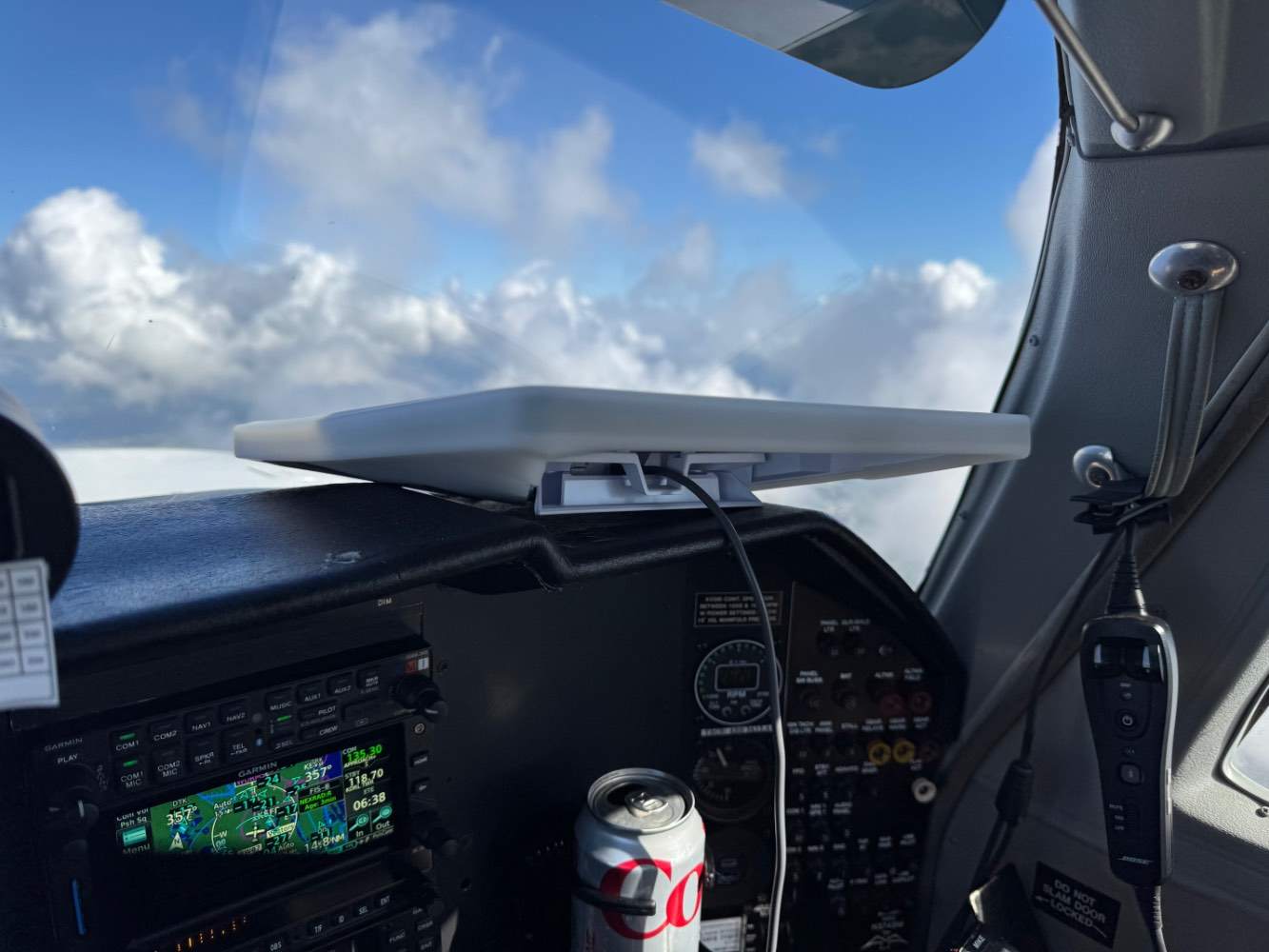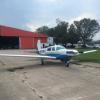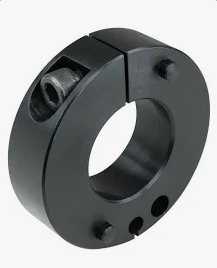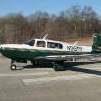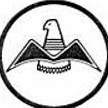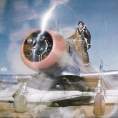Leaderboard
Popular Content
Showing content with the highest reputation on 11/05/2024 in all areas
-
Sorry to hear about the relative’s broken hip. Difficult process especially as folks age. Your doghouse is probably in good shape. The difficulty is that there are often big holes that are hard to see and work on. When you get back home and you take off your cowling’s side panels, put a drop light inside the doghouse and turn off the lights in your hangar. Look under all four cylinders for light leakage that isn’t through the cylinder fins. Also look behind the doghouse, particularly where the upper engine mounts are located. There should be large felt pieces that seal up that area, but are often missing or messed up. Finally, put the light just under the prop and look forward under the engine to where the generator and starter are. Additionally- there is supposed to be rubber baffle material attached to the forward part of the doghouse, top and bottom, all the way around the front. It goes inside a small aluminum u-channel on the cowling. All of that rubber material should be present and nice and flexible. Also additionally- are the inter-cylinder baffles still in place below the cylinders? These are sheet metal that extend between the barrels of cylinder 2&4 and 1&3. Engine cooling isn’t really about airflow, it’s about the air pressure differential between the top of the engine (doghouse) and the area under the engine (leading to the cowl flaps). Since it’s a fluid, the air in the doghouse will follow the path of least resistance- which is often big holes around the starter, generator, oil pressure adjustment, and engine mounts. That lowers the pressure differential so less air is being drawn through the cylinder fins. To summarize the problem areas: - upper engine mounts - around and under the oil pressure adjustment - around forward parts of the generator and starter - baffling in the u-channel at the front of the doghouse - inter-cylinder sheet metal baffles below the cylinder barrels - other areas of the doghouse where it fits around the cylinders and case5 points
-
And what a peaceful, positive 7 weeks it was on here.4 points
-
I disagree... This is exactly the sort of thing the FAA can do. "Any type certificated engine or airframe that is authorized or certificated to use ASTM D910 is allowed to also use G100UL in addition to or instead of any ASTM D910 fuel." Signed, some-dude-in-charge.4 points
-
Well, I'm not going to do this in an open forum. It can be discussed via email as I stated before. This is a private forum system in which myself and the community decide the rules. This topic is being locked.4 points
-
I was really hoping it wasn't fuel exhaustion. Mechanical failures are sometimes unavoidable, but knowingly taking off with low fuel is completely preventable. To take off with a low fuel light on in search of cheaper fuel has to be one of the most "Penny Wise-Pound Foolish" things ever. You're flying a $200,000+ airplane and if you're going to put 60-70 gallons in it to save $100-$200, yet risk your entire investment to make the trip to do so makes no sense whatsoever. Once again, the famous quote which is credited to Einstein applies, "The difference between intelligence and stupidity is that intelligence has its limits." With that mindset he was likely under-insured as well. There were only two hundred thirty one 252s made, and more than a few were turned into Rockets. It is sad to see the rate at which we keep losing them. Edit: And he subjected a passenger to this as well.3 points
-
In defense, it’s a design feature that allows lift point tracking during seismic activity.3 points
-
Just a quick update. I sent in both alternator and voltage regulator for iran. The alternator needed overhauled. Voltage regulator was inspected and turned out to be fine. Reinstalled both of them. Tested on the ground and in the air. Problem gone issue seems to be solved. Six weeks turnaround time the only drawback but better safe than sorry.3 points
-
The FAA just responded to my inquiry. I was told I'd need to fill out a Freedom Of Information Act Request that would be reviewed to determine if any information can be disclosed due to the proprietary nature of the issue. I responded by asking a few more general questions regarding the two populations of bushings. Update. According to the FAA POC, the failure mode for the two populations of bushings addressed by the two ADs appears similar.2 points
-
I will test this next time I'm down at the plane. Don't know if the latch could come open from a rough landing, but by that point it's unlikely to be a safety of flight issue. Very very true. I took off once with the baggage door open and knew it immediately. Unlike an unlocked cabin door which you couldn't push open in flight if you wanted to, the baggage door will fly wide open like a sail - and bend if it stays attached. Flying for me was a non problem, but the embarrassment for being an idiot remains. So does the cost of repair. The door itself closed fine afterwards, but there was distortion around the hinge and that cost money too. This discussion has been very useful to me. As Paul and others have said, maybe the risk of flying unlocked outweighs any chance of being trapped by a jammed door and a locked luggage door. I'm slowly being persuaded.2 points
-
"Acceptable to the administrator" covers a lot of ground, and ACs, opinion letters, and other methods are often used to convey and clarify what that means. If fuel x becomes "acceptable to the administrator" to qualify as a particular "octane" or "grade" of aviation fuel, then there's nothing keeping us from using it and being completely compliant with the TCDS. The TCDS wording for fuel isn't very specific, and that is true across most TCDS for GA airplanes. Newer ones often tend to be even more vague than older ones, it seems. It seems to me it'd be pretty easy for the FAA to convey, through a number of means, that a particular fuel is compatible with the description in the TCDS. Maybe just an update of AC 91-33 would be sufficient. AC 91-33A says: The FAA does not regulate the distribution systems for either aviation gasoline or automotive gasoline. Nor does it regulate the specifications for either fuel. It does, however, approve the use of fuel to a given specification in an aircraft engine. So AC 91-33 says the FAA can approve the use of fuel to a given specification, which is really all that is needed.2 points
-
MSB 632B referenced in the first (2017) AD describes the bushings as non-conforming and implies that some bushings were of incorrect diameter.2 points
-
2 points
-
I had a relative that owned a ‘62C back in the 1980s and the baggage door opened on him when he hit some severe turbulence on descent over the foothills east of San Diego. The door did not unlatch. The sun had set and it was dark… but VFR. He speculated he transitioned through some kind of on-shore flow wind shear. The door was tweaked, but did not depart the airframe. I was stationed at Mather AFB at the time and he had me scrounge the yard at Kenny Faeth’s for a replacement door. I sent him one, but being the doors are hand-fitted, ultimately it was less work for his A&P to reskin his original baggage door and tweak it back into shape. Looking at my ‘63C, I cannot imagine how much fuselage flex would be required to unseat the baggage door latch pins. I also have a lot of friction on the pins to close the latch, to the point I have to apply some pressure on the door to more easily engage the pins in the strike plates. I installed a lanyard and don’t lock my baggage door. I installed the lanyard to pull aft and it’s at the aft end of the door next to the hat rack. Much less likely rear seat pax would be inclined to touch it. Perhaps the amount of travel of the latch pins should be investigated to make sure they fully engage the plates on the fuselage. I don’t think there’s any adjustment for throw (on the vintage birds anyway), but if the linkage gets worn, perhaps there is a risk of the pin(s) not fully engaging.2 points
-
The test stand is incompatible with testing mixture distribution but there is no rush to do. Mixture distribution shouldn’t be tested till after break-in is complete because we want to do slow sweeps below 65% power not at 75% power for breaking in. Concur it usually takes a few iterations to get the mixture distribution dialed in but isn’t a concern. Sent from my iPhone using Tapatalk2 points
-
I wonder if there’s a difference in mechanisms between the vintage models and later ones. My M20C latch pins are such a tight friction fit that there is no way -seriously, NO WAY- that it can come open by itself, as long as it was properly closed and fully latched before departure. And since I added an emergency exit pull to mine that only works if it’s unlocked, I’m going to keep leaving mine unlocked but checked (and double-checked) before flights.2 points
-
2 points
-
First of all the next Faa Re-authorization Bill is in 5 years. That train just left the station and this issue was not in it. Second I think you have it backwards. Historically the FAA had the willingness. As @Pinecone highlights above, the Supreme Court's "Chevron Defense" ruling effectively gives the Courts more say over the FAA decisions. Now the FAA will have to contend with ignorant judges that have to be educated (and will be swayed by counsel seeking alternate interpretations). Of course no-one at the FAA now wants to stick their neck out for anything controversial even if it makes sense. People want it both ways. When it suits their personal best interests, they want the FAA to make broad sweeping decisions for the sake of efficiency and speed. And when the same people disagree with anything not in their personal best interest they want to be able to force it out of the FAA and back into the Courts mucking decisions up into long drawn out legal affairs. https://mooneyspace.com/topic/48867-the-earth-shook-a-little/1 point
-
You're absolutely correct. I know a guy that had to have his redone at 300 hours in his E because they didn't seal the case correctly and put high compression pistons in it. That's kind of my point, engine time really isn't as big an indicator of engine health as many think it is. I fix stuff when it breaks on mine, run oil analysis every oil change and borescope every 100 hours. I've got 350+/- mostly trouble free hours on it now. Sent from my Pixel 9 Pro XL using Tapatalk1 point
-
Yes. Also it has been recommended with buttons that stick in the G1000 or GNS 430 or 530 to exercise them 50-100 times. I had a GNS 530W where the flip/flop used to stick and that cleared it up.1 point
-
Title 49 is much broader than just AVS. The Administrator doesn't approve perse, but the FAA is the authority for creating all aviation fuel standards (including chemistry). It'll be in Subtitle 7. It'll be detailed in the safety regs in the 4400's someplace.1 point
-
Great work, looks nice. And yeah, in a physics textbook that bolt isn't optimum, but real life it will never let you down. The bolted base is interesting, did you drill that out or were there holes there? I think most I have seen used supports around the edge rather than bolts. Anyway, here's to many uneventful times using them.1 point
-
Great reasoning, but the stakes are much higher than $1K. A new baggage door will run more like $5K not counting painting it. Just saying… Sent from my iPhone using Tapatalk1 point
-
1 point
-
Scored a super clean J panel upgrade takeoff VSI for $50! Thanks @EricJ for the pro tip. Plus I'll have a cool paperweight on my desk for my old one.1 point
-
Maxwell in Longview, TX. About an hour’s flight away from Mena. Mooney experts. If there is something out of kilter they will find it.1 point
-
Sensata doesn’t sell direct to customers… because they suck… (plus they won’t sell just the printed switch caps) I use aircraft spruce… they may have them in stock, or can get from Sensata quite quickly… +1 for holding onto your existing switch caps… they snap on and off an oversized metal body… Landing lights of the original kind…(not LED) use a lot of electricity and generate a tiny spark each time you turn them on… this tiny spark knocks a micro piece of metal off the contact surface…. After years of operation, the CB switch loses its over center nature… the click gets softer and softer over time, as does its ability to resist tripping. PP thoughts only, not a mechanic… best regards, -a-1 point
-
I have installed gami’s in three planes. None of them were correct from the first iteration. two were good after the second set, one took four rounds. You will likely need to do your tests in flight under real conditions to get it right. I would not have confidence with it being run on a test stand. (Maybe it was me doing the lean tests improperly) Maybe someone with more experience can edify me, but I think real conditions are what is critical. It isn’t a big deal and gami doesn’t charge you for the additional injectors, it’s just a tedious process. But the fuel savings will pay for them rather quickly.1 point
-
same for mine, not easy to open thte thing when you want, if it comes open after being properly latched, something probably took half the plane with it1 point
-
1 point
-
"It's hard to say on this one, it could have been the low fuel set-up, combined with a pilot leaning during climb, which he might have been used to doing on a normally aspirated engine. Not good to do on a turbo engine. His low time with the airplane and possible mismanaging the engine may have been the ultimate cause. Or the engine just came apart at that point due to no one else's fault." It is possible to get the TIT to exceed redline and get the engine into detonation territory in a few short minutes after takeoff in the TSIO 360 if you lean the engine at full power. Worse if the fuel is not setup properly. In fact, you can do this at any time during climb if you leave the power in full and back the red knob out far enough. One cause is exactly what Lance says, the pilot is used to operating a normally aspirated engine and leans in the climb while the engine is making full power. The other is to fail to set the fuel knob to full rich right before takeoff, and the way that can happen is that you pull up to the hold short line, find out your takeoff is going to be delayed so you had the engine set full rich but now you back the knob off, and then you just forget to put it back in before taking off. If you don't catch it you will shortly see some magnificent temperatures, both TIT and CHT. Obviously can't say that is what happened here, maybe something did fail in the engine because of the prior work, but pilot error in managing the engine is possible.1 point
-
Another vote for Bruce's. I have a full fuselage one, and it covers all openings from the intake air behind the prop all the way to the tail cabin intake. No need for "plugs". The cover has nice microfiber lining that protects the cabin glass, too. Give them a call, you might get a discount.1 point
-
1 point
-
I've had them replaced on my K. Here are the part numbers: LHS: 550060-001 RHS: 550060-002 Lasar has (had) them, but I got them from wentworth for $500 a pop.1 point
-
You are correct. Even the early J models did not have the factory inside release mechanism. There is the common mod of adding a pull to the inside so that it can be opened from inside, but that does not work if the door is locked. I leave mine unlocked for this reason. Adding an interior pull makes it easy to visually check whether the door is fully latched from inside the cabin, like during pre-start checklist or something like that.1 point
-
1 point
-
So I got a Starlink mini (mainly for Hurricane Preparation here in Florida) and I decided to temporarily upgrade to the $250 plan and throw it on the glareshield of my Mooney. Heading north (Orlando to Charleston), it worked perfectly. Over 100 Mbps at times. I didn’t find it to be in the way at all. Heading south, this evidently didn’t provide enough northern sky view so it would get stuck and refuse to initialize fully (“Calculating orientation”). I decided for fun just to hand hold it up to a side window and point it as north and east as possible. And it finally connected. But the interesting thing was, once it connected, I was able to throw it back on the glareshield and use it just fine! It held connection that way with no noticeable drop in speed for close to another hour, including a few course changes. If anyone else decides to try this, try that if it gives you trouble. I sure wish the mini had been available when I went to Alaska. Wasted $600 on a used Iridium satphone and $500 or so on 200 (very slow) data minutes to get in-flight weather in Northern Canada. I’m willing to bet Starlink would have worked much better!1 point
-
Indeed, but the average was twice that and in the range of TCM position tuned injectors. Can’t go by your single lowest one. It’s the repeatable average that counts. Sent from my iPhone using Tapatalk1 point
-
1 point
-
The o-ring is the seal against the bottom of the wing and the nut plate that is riveted to the wing skin inside the tank. The nut plate and the rivets that hold it are sealed with tank sealant on the inside just like the rest of the tank. If the drain valve gets overtorqued on installation or it gets broken or stuck and needs a lot of torque to remove it, it can move the nut plate enough to slightly unseat the rivets and/or lift some of the sealant inside the tank. That can lead to some annoying leaks (both of mine did this). On mine the leaks are around the rivets that hold the nut plate in. Both of mine responded well to liberal application of oyl-tite seal, swiping it across the rivet heads to try to drive the seal stick material under the rivet head. One side I've had to re-apply it once after a couple years. Other than that they've stayed pretty tight and leak very little. Otherwise a "proper" repair requires resetting the rivets, which requires removing the seal inside the tank around the nutplate and resealing it after either replacing or resetting the rivets. It's the sort of thing that is done during a tank reseal or repair but I think is otherwise not the first option.1 point
-
You can't double up o-rings. The o-ring on these valves seals against the underside of the wing. You need to figure out what's causing the leak. Make sure the o-ring is not damaged and there is no damage to the area where the o-ring seats. The valves need to be tightened snug but not overtightened, You could try putting some fuel lube (EZ-Turn) on the o-ring before assembly.1 point
-
You must have the TCM position tuned injectors then, which more typically yield 0.6-0.7 GPH - rarely 0.5 but occasionally 0.5. I've seen hundreds of these and no one with stock injectors that can get a verified repeatable 0.3 GPH spread1 point
-
If the positions were swapped and we were being forced to switch from G100UL to 100LL right now, the whole pilot community would be up in arms, not even counting the TEL's health effects. Lead fowling in plugs? 100LL is a non-starter! 100LL's performance per volume? 100LL is a non-starter! Can't use modern oils? 100LL is a non-starter! Sure, G100UL isn't perfect and by switching we are trading some flaws for other flaws. (I don't want my paint stained!) But overall I think G100UL is a better solution than continuing to use 100LL. Mostly because of the perception of the health effects of the TEL in airplane exhaust. And we are unlikely to ever have as much data on G100UL as we do on 100LL in terms of engine performance and longevity. Piston powered aviation has passed its peak; even if we magically switched everybody to G100UL now, there will never be as much avgas burned in the future as there has already been burned. Unless someone can state a specific testing metric and threshold that would be sufficient that we have not met, and why the current testing is insufficient, I am not going believe any arguments that 'more testing' or 'more time' is needed. I think this is just resistance to any change. https://thelogicofscience.com/2016/06/20/the-nirvana-fallacy-an-imperfect-solution-is-often-better-than-no-solution/1 point
-
1 point
-
Laughable? https://www.lycoming.com/publications/service-letter-no-270 Eliminating lead removes the barriers to modern synthetic oils. It will be a while before that happens, but it will. Doing away with the thick, toxic, grey film that accumulates on the belly is nearly to worth it. Being able to have my little ones help clean the belly would be worth it. I have been tested and I know that I have detectable lead levels in my system that are above average but still in the "safe range". In my youth I was careless with my handling of 100LL and aircraft parts that had been exposed to lead. I think the threat of lead to the general public from 100LL is way overstated. The real threat is to pilots, maintenance professionals and passengers that fail to take precautions or engage in risky behavior.1 point
-
Because I value my time as well. Most of my flying recently has been purpose driven. Flying two to three days a week means I don’t need an excuse to get the plane out. I am not making a special trip for $50, nor would I add a stop to an existing trip for $50. I like my local FBO and I want to do business with them. I enjoy having local services available. I had to delay my trip to NC a few Saturdays back because of a leaking line to the fuel pressure gauge. I had a new line fabricated with my old fittings (local shop), installed (by me) and signed off by an IA at the FBO before 11:00am Monday morning for <$200 total. I was able to do that because I support and have relationships with the service providers on my field. Shopping all over hell and half acre to save $50 is not a big concern. I might feel differently in my retirement, but that is quite a ways off.1 point
-
I have flown my Ovation several times in moderate ice. It works really good, but make sure you know your system is working 100% before you challenge it. As mentioned, turn it on well in advance, at least 10 preferably 15 minutes. Get your airplane "soaped up" and you will be impressed. That all said, don't go looking for it, but use it as an option. I always leave myself an "out", like knowing I can descend or turn around. Don't box yourself into a corner with TKS being your only out.1 point
-
From what I understand, Paul Maxwell handles the avionics end of the business. Lynn Mace an A&P/IA, who used to own a Mooney Service Center himself, oversees the shop. Don Maxwell owns the business. I'm sure no shop is perfect, and no shop finds every squawk, but comparing how Jewell handled overhauls and closed down, to Maxwell Aviation who does a couple hundred Mooney annuals a year and helps many people calling for advice, free of charge, is not a fair comparison.1 point
-
SB 1193 states that the ban will begin Jan first 2026 for “disadvantaged” communities and 2028 for “urban growth” communities. And these definitions can be very subjective. Once again we are forcing with mandates before the solution is completely ready for prime time. 2026 that’s less than two years from now. I have spent my entire life in California and have seen so many regulations forced upon us by the air resources board. It started many years ago with spare the air days making it illegal to have a fire in your fire place when they decided it was a bad day and not just in the summer but on winter days when the air was just fine. Recommend no BBQ no operation of gas tools and as of last year many gas powered tools are now banned. New homes for the most part must be all electric and if any of you haven’t experienced the cost of E service in CA you would be floored. Be VERY careful what you wish for because these restrictions will be coming soon to your state especially if a certain former Cali senator becomes our next president. Don’t believe a word she says. I have lived it. I can remember when the California summer blends came out for auto gas and quite a few retailers just stopped selling in the state. Can’t remember the last time I saw a Texaco or union 76 or BP chevron is checking out and moving to Texas. If the unleaded is still not ready we might not have any suppliers willing to sell in this state. Yes unleaded worked well for auto and other vehicles but not until manufacturers updated their engines. Just think of the log jam if all our cylinders have to be modified or replaced with hardened seats. Just saying be careful what you wish for.1 point
-
End the Eagle program. Give half the money it would have consumed to GAMI for universal public access to the G100UL STC. End of problem, less money, less meetings, less problems.1 point



